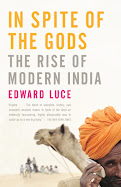Friday, December 9, 2011
EU= Peewee football Team
What does the EU and a typical American peewee football team have in common?
Often, the last picks (read: unpopular kids) end up pulling their own weight on the team,while the quarterbacks and runningbacks enjoy the glory but shy away from real responsibility when the game is lost.
The last picks being Poland,Latvia,Malta,Lithuania,Bulgaria and the like. When these countries joined the EU in the 2000s there was a lot of negative sentiment from the citizens of the already existing EU member countries,which I experienced first-hand while traveling.These 'last-pick' countries seemed unable to convince anyone that they deserved to play in the major league,although they clearly and by their own right, met the requirements for sitting at the big-kid table ,also known as the Copenhagen Criteria.
Nevertheless, the 27 member countries of the EU have spent all year trying to tighten its financial belt, but a lack of consensus has made it impossible to belt that notch. Not surprisingly, smaller, dorkier ,last-pick countries on the pee-wee team have not been the ones gracing the international first-pages with their indecision, rather the larger, more confident countries have. British Prime Minister James Cameron has refused to abide by all the regulations in the new fiscal treaty, claiming that not all of them are in "Britains interest". Someone should have let him know that there's no I in TEAM. Hungary and Sweden are also reluctant to commit. Incidentally, both Britain and Hungary continue to use their on currency, both valued higher than the euro, despite enjoying the rest of the membership benefits of a currency union.
One simply must wonder when all the bickering will end and each nation will realize that joining the EU means taking responsibility for ones own actions but also dealing with the consequences of others'.
Labels:
economics,
EU,
Europe,
financial crisis,
international relations
Sunday, August 28, 2011
Slumdog. No Millionaire.
It comes as no surprise that the capital cities of developing countries tend to be the most densely populated areas of those countries. Globalization is forcing developing countries across the world to undergo their own industrial and technological revolutions in a New York minute,ready or not. Along with revolution comes migration,typically in the way of rural populations moving to the capital city in search of work.Manila,however, stands out from her sister DCs (developing countries), not for being the most densely populated city in the world (111,576 people per mi²) but for having more than 50% of its metropolitan population living in slums.
Manilans are in great danger as population continues to grow and rural communities continue to migrate into the city in search of a meager $2 per day. NGOs worldwide have taken an interest in reducing the slum population, but I cant help but feel repulsed by the Filipino government's passive aggressive approach. Following a steady population growth rate in the late 1990s, a sudden jump in the year 2000 caused great concern when it became obvious that the capital city would be unable to handle the influx of rural migrants. As of 2002, the federal government began encouraging these rural dwellers to return to the countryside in order to alleviate the growth of slums in Manila. According to a report by BBC's Paul Mason, the slumdwellers made it clear that they were unwilling to return to their commerce-starved village centres and depleted rivers and land. Nevertheless, the government has been building homes in rural towns such as Cabuyao and relocating indignant slumdwellers there, to non-electrified, sparsely populated, commercially stagnant communities.The fact that the government is relocating slumdwellers to the exact stale communities they escaped seems to be of no importance.
Undoubtedly,the living conditions are better than those in the slums,where collapse,arson and flooding are a constant concern due to the poor construction of the dwellings. Even more so in the past few years, with slumdwellers claiming occurrences of mysterious fires following refusal to relocate to the countryside. The government denies any accusations of foul play pointed at it and states that although it is using police forces to enforce the relocation, it has not resorted to arson. Nevertheless, suspicious fires which leave hundreds homeless, sourced to 'faulty electrical wires' have become common in the slum of Tondo in manila,among others. With aggressive relocation to communities with stagnant economies and a passive[read: nonexistent} approach to providing incentives to the slumdwellers, the government is literally putting its citizens between a rock and a hard place.
urban upgrading success stories
The best solution is likely a combination of both urban upgrading and incentive-driven voluntary relocation outside the over-populated capital, as globalization has a well-earned reputation of producing more slumdogs than millionaires.
Labels:
agriculture,
bottom billion,
developing countries,
economics,
manila,
philippines,
slum
Subscribe to:
Comments (Atom)











